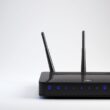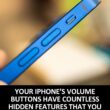Many of us are now working from the comfort of our own homes, which is a trend that is expected to continue. Some of us have been doing this for a long time, while it’s all brand new for others. So, we may need a second screen while working on a bigger task at home for better outcomes. Because of this, many people are now looking for information on “how to use an Android tablet as a second screen.”
The advantages of utilizing your tablet as a second monitor are comparable to those of using a proper second display, despite the tablet’s smaller size. You won’t have to play peekaboo with your open applications anymore since you can split your windows over two displays. When it comes to video conferencing, you can’t do without two screens. But there’s no video connection on your smartphone or tablet. There are many fantastic ways to try to solve the problem, which is good. “Let’s not waste any more time and go right into the meat of the matter.”
1. How to Use an Android Tablet as a Second Monitor for a Mac
iDisplay is the finest app for mirroring and extending your screen that is available for Mac computers. To turn an Android tablet into a second display for your Mac, you will need to follow these steps:
- You may get the drivers for your iDisplay device from their website.
- Give iDisplay permission to make changes to your device.
- Installing iDisplay on your Mac is as simple as following the on-screen directions.
- Whenever asked, restart your Mac.
- Install the iDisplay app by going to the Google Play Store.
- Launch it on your Android tablet. The application will instantly begin looking for nearby devices to connect to.
- Establish a connection between your tablet and your Mac.
- Pick either “Additional Monitor” or “Mirrored Monitor” from the drop-down menu.
Just like that, you’re all set. iDisplay is also compatible with Windows and iPhone devices, so you may use it with any of them. Simply check to see if both of your devices are connected to the same Wi-Fi network. With iDisplay, even the connection of three or even four monitors is possible. In addition, you may link many devices at the same time, even though this functionality is only available in Mirror Mode.
2. Use Android as a second monitor for Windows through SpaceDesk
Though you can use iDisplay for this purpose, many tech experts recommend SpadeDesk for Windows devices. For this, you’ll need an Android tablet running the latest version of Android and a Windows PC running Windows 8.1, 10, or 11. Take the following steps:
- Launch a web browser, and go to the Spacedesk website from there.
- Simply choose the Download option, and then download the Spacedesk driver software package that corresponds to the version of Windows that you have installed on your computer. In addition to this, you will be required to choose between a 32-bit or a 64-bit installation. The vast majority of the current Windows machines need a 64-bit installation.
- After the download is done, you should start the installation process for the Spacedesk driver.
- To complete the installation of Spacedesk, it is necessary to adhere to the on-screen directions provided by the installer.
- Launch the Google Play store on your Android tablet.
- Try looking for Spacedesk. Choose it when it shows up in the search results list on Google Play.
- On the Spacedesk app page, choose the Install button and wait for the application to download.
- Check to make sure both your Windows PC and Android tablet are connected to the same Wi-Fi network.
- Launch the Android application launcher and choose Spacedesk from the list of available applications.
- In the app, you’ll see all the machines on your network. Select the computer you wish to use with your Android tablet by tapping its icon.
- Wait until your Android tablet successfully connects to your Windows PC to be used as a display. It might be a few seconds before you see the results. There’s a brief chance that the display on both your Android tablet and your Windows PC may flicker or go blank.
It’s time to see your Windows desktop on your Android tablet. You can use it in the same way as a second screen. SpaceDesk now allows touch input when running on an Android tablet. You have further customization options available in the Display Settings section of Windows.
3. Google Remote Desktop
With Google Remote Desktop, you can use your Android device to control your PC. Everything from your PC to your Android phone’s screen may be run with this software. Google Remote Desktop has the same user-friendliness as Google’s other products, making it simple to set up and use. You may use this software in the following ways:
- You may get Google Remote Desktop for your Android tablet by downloading it.
- Set up remote PC access once you’ve done that.
- It will prompt you to install its extension on your Chrome browser if you do so.
- Then click “Accept & Install” to begin the installation process on your computer.
- Followed by clicking the Turn On button, choose Remote Access from the menu. After that, give your computer a name and choose a 6-digit security code before clicking the Start button.
- Then, open the app on your phone, type in the PIN, and choose it when your desktop shows up. That brings us to the end of the process.
You’ll be able to view your Android tablet’s screen and manage your keyboard and mouse from this point. You will not be able to utilize two separate applications on both displays while you are connected to Google Remote Desktop.
Wrapping up
Adding a second monitor may be a quick and easy way to improve productivity, organization, and your ability to juggle many tasks. Dual monitors are an excellent answer to the problem that arises when you need to update a document or work on another project while simultaneously connecting to your work chat or Slack. You may also make simultaneous use of multiple documents without worrying about one being obscured. However, if you don’t want to invest in a permanent arrangement, utilizing a tablet as a secondary display device might be acceptable. This provides mobility and usefulness, so it’s a win-win situation.



